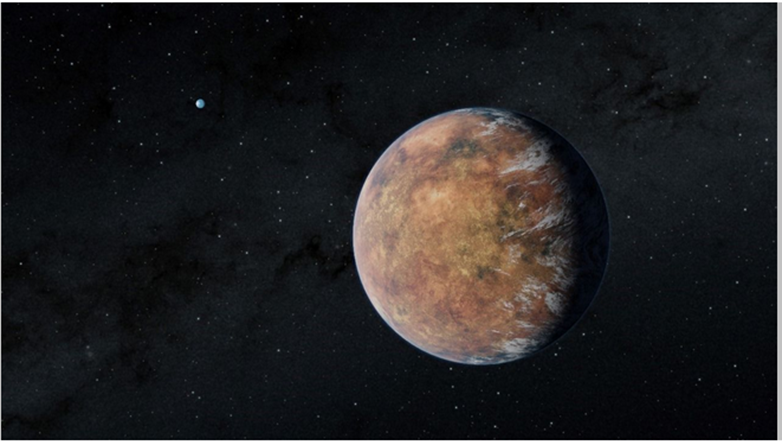Scientists discover a planet the size of Earth that may contain water

Scientists have discovered an exoplanet the size of Earth, half of which is trapped in perpetual day, the other half plunged into perpetual darkness and covered in active volcanoes whose emissions can preserve the atmosphere.
In a study published in the journal Nature, the international team of astronomers said: The planet, called LP 791-18d, orbits a small red dwarf star about 90 light-years away.
The volcanic activity makes the discovery particularly noticeable to astronomers because volcanic activity facilitates interaction between the inner and outer worlds.
"Why is volcanic activity so important?" said Stephen Kane, an astrophysicist at UC Riverside. It's the main source that contributes to planets' atmospheres, and with an atmosphere you can have surface water, which is a requirement to sustain life as we know it."
Astronomers already knew about two other worlds in this star system, LP 791-18b and LP 791-18c, the latter 2.5 times more massive than Earth and about 9 times the mass of our planet.
During the entire orbit around the star, planets LP 791-18 d and LP 791-18c pass very close to each other. LP 791-18c's massive size creates a gravitational pull that makes LP 791-18d's orbit elliptical, rather than perfectly circular. These distortions in orbit create friction that heats the planet's interior, resulting in volcanic activity on the surface.
Scientists found the planet using data from NASA's TESS satellite and the retired Spitzer Space Telescope.

Kane was part of the team that conducted the original TESS observations, and co-authored the paper on the newly discovered planet.
The planet's other major feature, as highlighted in the paper, is the fact that it does not rotate.
“LP 791-18d is tidally locked, which means that the same side of the planet is constantly facing its star,” said Bjorn Bencke, co-author of the paper and professor of astronomy at the Trottier Institute for Exoplanet Research, University of Montreal.
He explained: “It is possible that the day side is so hot that there is no liquid water on the surface. But the amount of volcanic activity we suspect is going on all over the planet could have preserved the atmosphere, which might have allowed water to condense on the night side.”
And although the presence of many constantly erupting volcanoes would probably make the planet uninhabitable.
“The big question in astrobiology, the field that extensively studies the origins of life on Earth and beyond, is whether tectonic or volcanic activity is necessary for life,” said Jessie Christiansen, author of the paper and a research scientist at Caltech. In addition to the potential for providing the atmosphere, these processes could produce materials that would otherwise sink and get stuck in the crust, including those we think are important to life, such as carbon.”
The recent discovery of active volcanoes on Venus also shows that Earth-sized planets can continue to add to their atmospheres, with or without plate tectonics.
The main components of volcanic emissions are carbon dioxide and water vapor, greenhouse gases that can help keep the planet warm. “On Venus, volcanic carbon dioxide remained in the atmosphere, sending the planet into a runaway greenhouse state,” Kane said.

Today, surface temperatures on Venus are more than 850 degrees Fahrenheit.. and the chances of life there are slim. But it may not always have been this way. Volcanoes may be a big piece of the puzzle about what really happened on Venus. Planets like LP 791-18d can provide important insights into how volcanism has shaped the environments of planets over time, including Venus and Earth.”
Source : phys.org

